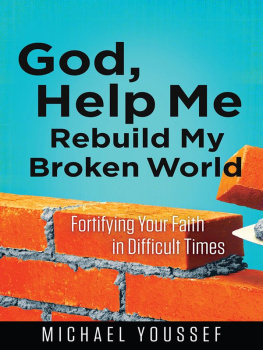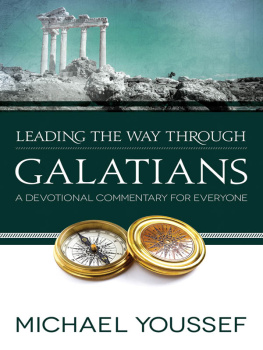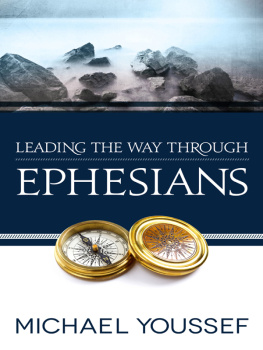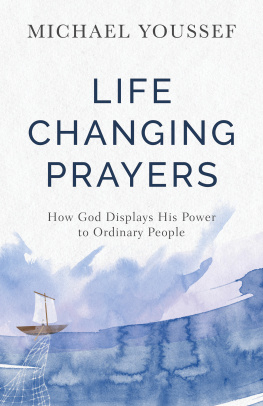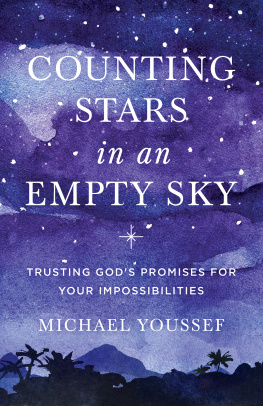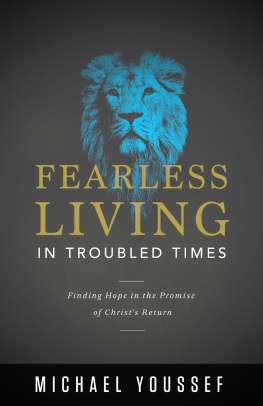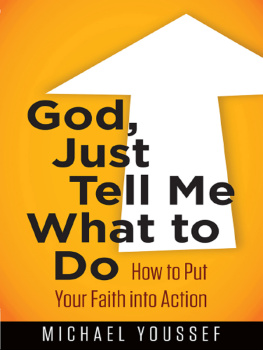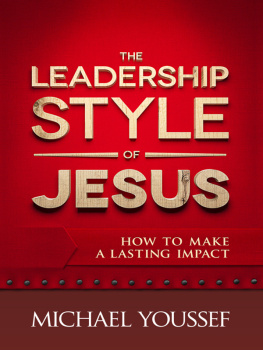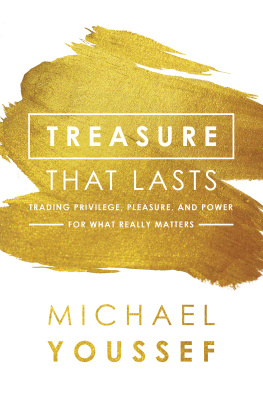Dr. Michael Youssef - When the Crosses Are Gone
Here you can read online Dr. Michael Youssef - When the Crosses Are Gone full text of the book (entire story) in english for free. Download pdf and epub, get meaning, cover and reviews about this ebook. year: 2011, publisher: Dunham Books, genre: Religion. Description of the work, (preface) as well as reviews are available. Best literature library LitArk.com created for fans of good reading and offers a wide selection of genres:
Romance novel
Science fiction
Adventure
Detective
Science
History
Home and family
Prose
Art
Politics
Computer
Non-fiction
Religion
Business
Children
Humor
Choose a favorite category and find really read worthwhile books. Enjoy immersion in the world of imagination, feel the emotions of the characters or learn something new for yourself, make an fascinating discovery.

- Book:When the Crosses Are Gone
- Author:
- Publisher:Dunham Books
- Genre:
- Year:2011
- Rating:3 / 5
- Favourites:Add to favourites
- Your mark:
- 60
- 1
- 2
- 3
- 4
- 5
When the Crosses Are Gone: summary, description and annotation
We offer to read an annotation, description, summary or preface (depends on what the author of the book "When the Crosses Are Gone" wrote himself). If you haven't found the necessary information about the book — write in the comments, we will try to find it.
When the Crosses Are Gone — read online for free the complete book (whole text) full work
Below is the text of the book, divided by pages. System saving the place of the last page read, allows you to conveniently read the book "When the Crosses Are Gone" online for free, without having to search again every time where you left off. Put a bookmark, and you can go to the page where you finished reading at any time.
Font size:
Interval:
Bookmark:
WHEN
THE CROSSES
ARE GONE
THE CROSSES
ARE GONE
RESTORING SANITY
TO A WORLD GONE MAD
Michael Youssef, Ph.D.

When the Crosses Are Gone 2011 by Michael Youssef
All rights reserved. No portion of this book may be reproduced, stored in a retrieval system, or transmitted in any form or by any meanselectronic, mechanical, photocopy, recording, scanning, or otherexcept for brief quotations in critical reviews or articles, without the prior written permission of the publisher.
Published in Nashville, Tennessee by Dunham Books. For information regarding special sales or licensing, please contact the publisher:
Dunham Books
63 Music Square East
Nashville, Tennessee 37203
ISBN 978-0-9837456-2-4
Printed in the United States of America
A great civilization is not conquered from without until it has destroyed itself from within.
Will Durant
The Dangerous, Offensive Cross
A cross is a dangerous thing. In 1934, the Veterans of Foreign Wars put up a cross far out in the Mojave Desert, a memorial to soldiers killed in World War I. The seven-foot cross stood atop a stony outcropping called Sunset Rock. To get there, you had to leave Los Angeles and drive three and a half hours northeast on U.S. 15, past Victorville and Barstow, past Zzyzx Mineral Springs, then turn south onto Cima Road, a two-lane blacktop. You would then go almost nine miles into the Mojave National Preserve, and probably not see another human being along the road. Arriving at Sunset Rock, you would see no signs, no inscriptions, just a simple white cross which had stood undisturbed for almost eight decades.
In 2001, a former Park Service employee sued the government, demanding that the cross be removed. This began a nearly decade-long legal battle. A judge ordered that the upper portion of the cross be covered by a plywood box, so that it looked like a blank signboard instead of a cross. The case was battled all the way to the United States Supreme Court.
For some reason, a lonely cross out in the remoteness of the Mojave Desert was so threatening that a host of powerful organizations joined the campaign to destroy it. Those organizations included the American Humanist Association, Atheist Alliance International, the Freedom from Religion Foundation, Americans United for Separation of Church and State, People for The American Way, and the American Civil Liberties Union.
Less than two weeks later, around May 10 or 11, thieves went to Sunset Rock, cut the mounting bolts, and stole the cross. Today there is no cross on Sunset Rock.
Even in the Mojave Desert, where almost no one ever saw it, a cross is a dangerous thing. Those who felt threatened by it had to destroy it.
It has always been this way.
In November 1917, Vladimir Lenin and the Communists seized power in Russia during the bloody Bolshevik Revolution. There was no room for God under the new regime. The Communists invaded churches and carted away sacred objects and religious images. They eliminated religious holy days, such as Christmas and Easter, and replaced them with state-sanctioned festivals in honor of Marx and Lenin. They denounced the clergy as enemies of the Revolution, and then executed them.
Lenins goal was to replace the Christian religion with a godless Communist religion. Those who once followed Jesus had to join the cult of Lenin. Churches became temples of devotion to the State. Hymns of praise to God were replaced by anthems praising the Revolution. All across Russia, soldiers climbed to the pinnacles of church buildings, tore down the cross, and replaced it with the red star of the new Soviet state.
Throughout the formerly Christian realm of Mother Russia, all the crosses were gone.
Years passed. Lenin died in 1924 and was replaced by the even more ruthless Joseph Stalin. At the end of World War II and with the defeat of Nazi Germany, the leaders of the Allied nationsPresident Harry S. Truman, Britains Prime Minister Winston Churchill, and Soviet dictator Joseph Stalinmet in Potsdam, occupied Germany, to discuss how to establish order in the post-war world. At one point, Churchill warned Stalin that Pope
Stalin proceeded to subjugate all of Eastern EuropeBulgaria, Romania, Yugoslavia, Albania, Hungary, Czechoslovakia, Poland, and East Germany. Throughout these once-free, once-Christian nations, Communist soldiers tore down the crosses and replaced them with red stars. From the Baltic to the Adriatic to the Black Sea, all the crosses were gone.
Years passed. The people of Eastern Europe suffered under the tyranny of godless Communism.
Then, in June 1979, Pope John Paul II made a nine-day pilgrimage to his homeland, Poland. Just as Stalin had said decades earlier, the Pope came without armies. He came in peace. Yet the Communist authorities who ruled over Poland feared him. They were afraid to let him comeyet they were even more afraid of what might happen if they tried to stop him. The Pope threatened the Communists, because they associated him with the cross.
And the cross is a dangerous thing.
From the moment Pope John Paul II kissed the ground at Warsaw airport, the Communists did everything they could to downplay the Popes visit. For example, Polish state television had a commentator chatter over the Popes message. Yet nearly a third of the population of Poland turned out to see the Pope, and the rest of the people watched on television.
By coming to Poland in the name of the cross, Pope John Paul II changed the course of history. Three years later, the Pope received President Ronald Reagan in the Papal Library at the Vatican. Both men had survived recent assassination attempts. As they talked together, the American president told the Polish pope that he believed God had spared their lives in order to bring down the godless Communist system. Hope remains in Poland, Ronald Reagan said. We, working together, can keep it alive.
In June 1989ten years after Pope John Paul IIs triumph in pilgrimage to Poland in the name of the crossthe government of Poland permitted elections in which non-Communist candidates campaigned for election. Candidates from the non-Communist Solidarity union won a majority of seats. For the first time since the end of World War II, Poland had a non-Communist government.
Two years later, the Soviet Union collapsed. All across Eastern Europe and Russia, the red stars came down. The crosses came back.
Today there are crosses in Eastern Europe. There is faith in Eastern Europe. But in America, where religious freedom is guaranteed by the First Amendment to the Constitution, the cross is considered a dangerous thing. Even a cross out in the middle of the desert poses a threat.
Even in the hands of an eleven-year-old girl, a cross is a dangerous thing.
Kandice Smith, a sixth-grader at Curry Middle School in Walker County, Alabama, was excited to receive a cross necklace as a gift from her parents. She wore it to school as a quiet symbol of her Christian faith. But when school officials saw it, they ordered her to hide it inside her blouse. Even though the schools dress code policy stated that accommodation should be made for a students religious beliefs, officials claimed the rule against neck jewelry was designed to prevent gang activity.
Threatened with suspension, Kandice insisted on her right to display the cross necklace under both school rules and the U.S. Constitution. The American Center for Law and Justice filed suit in U.S. District Court on Kandice Smiths behalf. Stuart J. Roth, counsel for the ACLJ, said, The school districts policy clearly violates the free speech and free exercise rights of our client by denying her the ability to express her faith through the visible wearing of the necklace. Once the lawsuit was filed, the school backed down and agreed to accommodate the religious beliefs of students.
Next pageFont size:
Interval:
Bookmark:
Similar books «When the Crosses Are Gone»
Look at similar books to When the Crosses Are Gone. We have selected literature similar in name and meaning in the hope of providing readers with more options to find new, interesting, not yet read works.
Discussion, reviews of the book When the Crosses Are Gone and just readers' own opinions. Leave your comments, write what you think about the work, its meaning or the main characters. Specify what exactly you liked and what you didn't like, and why you think so.

